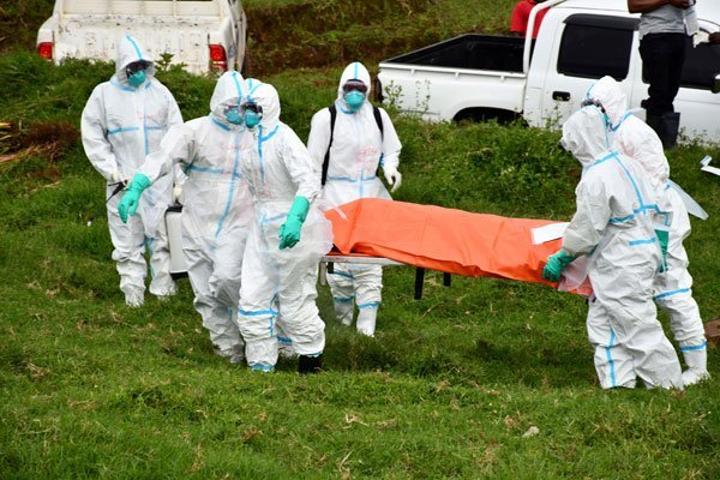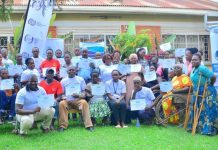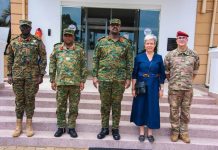Africa-Press – Uganda. Up to 90 percent of the 19 Ebola Virus Disease (EVD) deaths in the country in the current outbreak occurred in eight sub-counties of Mubende District, statistics from the Ministry of Health indicate.
The data also shows that 46 out of the 54 Ebola infections were reported from 10 sub-counties of Mubende, signalling that the disease is ravaging a very small part of the country.
The rest of the cases and deaths were reported from areas in Kyegegwa, Kassanda, Kagadi and Bunyangabo districts. The ministry said there is no Ebola in Kampala and the one death, which occurred at Kiruddu Hospital on October 7, was of an EVD patient, who escaped from Mubende.
Dr Henry Kyobe, the Ebola Incident Commander, revealed this data yesterday at a high-level meeting Emergency Inter-Ministerial Meeting on Cross Border Collaboration for Preparedness and Response to EVD held in Kampala.
The sub-counties with cases of Ebola infections include Madudu (16), Eastern Division (seven), Kiruuma (six), Southern Division (six), Kasambya (three), Kiyuni (three), Western Division (two), Bayeza (one), Kibalinga (one) and Kitenga (one).
“The distribution within the epicentre [Mubende] is majorly coming from Madudu Sub- County, which borders Kassanda [district] on one side and another district on the other side. It borders many districts,” Dr Kyobe said.
Dr Kyobe said Ebola was taken to Kyegegwa District by contacts of a probable case from Madudu who participated in nursing and burial preparation. A probable case is a person who died before the outbreak was confirmed on September 19.
Areas with deaths
The areas that have reported EVD deaths include Madudu (seven), Eastern Division (one), Kiruuma (three), Kiyuni (two), Southern Division (one), Western Division (one), Bayeza (one) and Kibalinga (one).
For the EVD in Kassanda, Dr Kyobe explained that the “probable case attended the burial of probable case in Madudu, died in Kassanda, and husband tested positive for Ebola.”
“For Kagadi, the case from Madudu operated a clinic and participated in burial of a customer who was a probable case,” he said.
For Bunyangabo, it was due to a medical intern who was a contact of the health workers of Mubende Regional Referral Hospital who tested positive for Ebola.
However, health experts said the outbreak could have happened weeks or a month before the attack was detected, meaning the disease had been spreading unnoticed by authorities.
Dr Matshidiso Moeti, the World Health Organisation (WHO) Regional Director for Africa, said the delay to detect the outbreak signals poor coordination in the health system.
“The risk for increased transmission was also high because the first patients didn’t present quickly into a public health facility. And that highlights the need for strengthening contacts with small private care providers which has led to some delay in diagnosis,” she said.
The first case, after weeks of deaths in communities, was detected on September 19, the same day the patient passed on.
Visiting herbalists
Dr Jane Ruth Aceng, the Health Minister, on the other hand, said many people were seeking care from traditional healers because they linked EVD to witchcraft.
“For the first patient, one good thing about him is that, he openly told health workers that people were dying in his village with the same symptom. So the health workers were prompted to go and find out what was going on in the villages,” she said.
Dr Aceng said they have strengthened community engagement and sensitisation and that many communities now understand how to prevent the disease and the importance of going to the hospital.
For More News And Analysis About Uganda Follow Africa-Press






